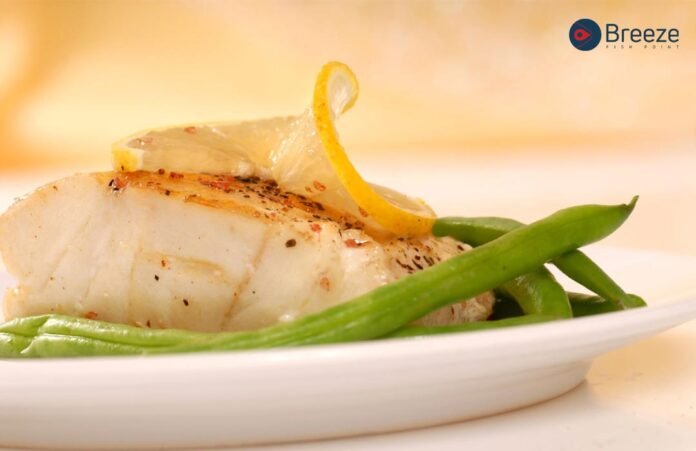The sea which is that vast and unexplored space of our experience is home to the marine creatures which provide food and amusement to hundreds of millions of people throughout the world. However, to feel the taste of seafood to the fullest, a person needs to understand the cyclicality and the correct time of sea products. Similarly, as oranges or apples can be considered seasonal, there may also be specific species of seafood or their derivatives that can be considered seasonal.
The seafood has its most appropriate time and it should be caught or bought as well as help in preserving the ecosystems of the seas. Fishing in the rain is a special challenge but in these periods it is possible to achieve good results since rainy weather can create appropriate conditions and hot bites in connection with the appearance of fish which prefers cooler, rainy water. Such patterns make it possible not only to catch more fish and have a better recreational time but also to feel the beat of the ocean.
Why is Seasonal seafood important?
Understanding and respecting these natural cycles is vital for several reasons:
Enhanced Flavor and Texture: Seasonal seafood means the seafood has gone through the optimal period (time and environmental conditions) for the production of enhanced and favorable texture of the fish. For example, you can get a very tender salmon when caught in its summer run, very fat and similar to butter, best for grilling and smoking.
Optimal Nutritional Value: Hitherto, the study has established that seafood that is harvested when it is in its production optimum is richer in essential nutrients than the commodity that is produced during any other season of the year. For instance, sardines that are harvested between February and April are particularly rich in omega 3, and therefore perfect for the heart.
Support for Sustainable Fishing: Consuming seafood in season means that consumers are helping to lessen string pulls of fish and improve the populations’ ability to spawn. This in turn helps to ensure a favorable existence of the seafood industry, which can last for generations.
Economic Benefits: Many people prefer taking seafood during a particular season, which tends to increase the supply, bringing down the price. This means that while the seafood being caught is top quality and is generally more expensive in its peak season, you will get it at a cheaper price.
What To Catch And When
Spring:
During winter it is cold but as the waters start getting warm and the winter winds start fading, the sea-bed too gets to work. From spring good pressure for fishing undergoes massive movements or spawn since temperatures and duration of light effectively influence their movement. Fishes such as sardine are also available during this period because water conditions support the breeding of this fish species while shellfish such as scallops, clams, mussels, and species of grouper are also well present in waters during this season due to the increased water temperature. These shellfish are mostly in their best state in the spring because the nutrients in this season’s water increase their fat and sweetness.
At the same time, wild salmon also start their incredible migration upstream mainly because of the biological demand to return to the site of birth for spawning. For salmon fishing, spring is the best time especially the second part of the year since the fish will be strong and full of fats after winter having feed in the ocean. Salmon that was caught during this period is characterized by high-fat quality, which makes it perfect for virtually any culinary treatment, ranging from the most basic, such as grilling, to the professional and rather complex, like salmon.
Summer:
Depending on the predators, seas during the summer also become warmer which fosters ideal conditions for the growth of sea food. These are the months when tuna, halibut, shrimp, and other related flora and fauna are at their peak. Tuna is flaky with a dense feel and a high proportion of ‘meaty’. It is great served ‘raw’ such as sashimi or briefly cooked as in a Nicoise salad. Some kinds of predatory fish are also caught by jig fishing techniques in this season like bass and grouper type.
Even lobsters, the sea’s gentlemen are tastier in summer, as they have just too shed a skin and grown a new, larger one, to contain the succulent meat.
Autumn:
During the final months of the year and especially wintertime, there is a great variety of heavy fish and in season seafood dishes that go well with cold weather. Swordfish, bluefish, and Pacific halibut are best in autumn, that their flavors thicken and take well to forceful treatment. Swordfish is used when preparing food requiring a firm, solid texture as it is recommended to be grilled and goes well with garlic, herbs, and citrus. Bluefish has a full rich flavor and is best used in recipes that smoke or broil a fish and it has natural oil that makes it suitable for rich dishes.
The oysters also mature during the falling season though mature ones are available throughout the year. The cooler water improves their briny, sweet flavor, which makes them popular figures in raw bars or oyster roast occasions.
Winter:
The cold and transparency of water in winter conform to the most favorable temperature for the growth of specific types of seafood species and it is also a difficult season for fishermen due to low atmospheric pressure and fishing. Thus, cod and haddock, two types of white fish that are a staple of the national diet, are particularly delicious during this period. They have more significant muscle mass and less fat, so they are excellent for dishes better when cooked and served hot, like fish stews, chowders, and fish n chips. By the same token, their flavors are relatively subtle, which means that they complement a range of companions, including creamy sauces, fresh herbs, and lemon.
As for things that can be gathered, in winter mussels are in season, the shells folded with juicy, delicious meat inside. They are well suited for steaming in vinegar, garlic, and herby sauce or used in pasta or some hot seafood risottos. Winter is also a time for Dungeness crab, probably the sweetest crab of the Year, and certainly a luxury food. Bread this crab’s sweet, tender meat with a mild, delicate taste and its applicability to virtually any culinary preparation.
Rainy:
Fishing in the rain can favorably influence the catching of a great number of different kinds of fishes, mostly sea and freshwater fishes. At this time catfish and tilapia species are most active as fresh water and nutrients enter the river or lake systems. The traditional nearshore fish such as redfish and snook are equally more frequent in the coastal waters for the reasons that as the top water surface cools up due to rain, these species becomes more aggressive in their feeding habits. The Prawns and crabs in particularly the ones that reside in the shallow waters of brackish waters are easy to affected by rains hence moving close to the shore.
Fish during rain, shellfish, oysters, clams, and mussels can be harvested due to increased plankton, making catches fatter and tastier. However, water quality should be cautious due to potential pollution contamination. Flooded fields and ditches are ideal for crayfish.




